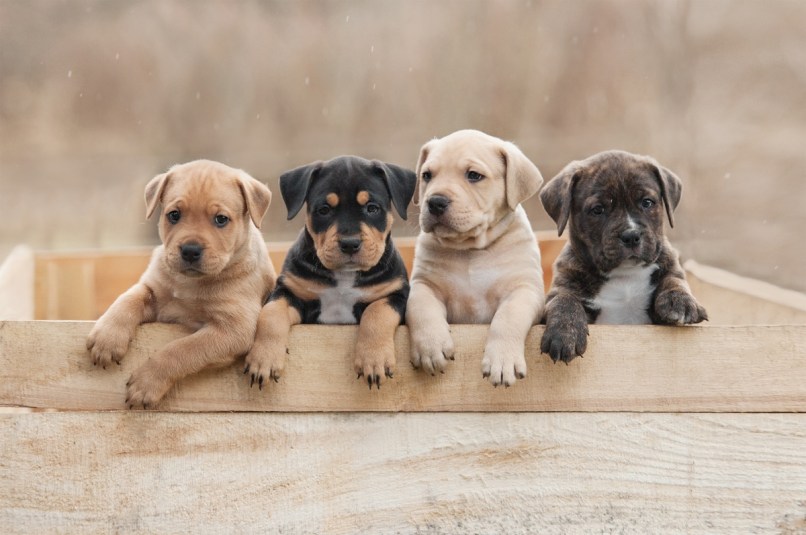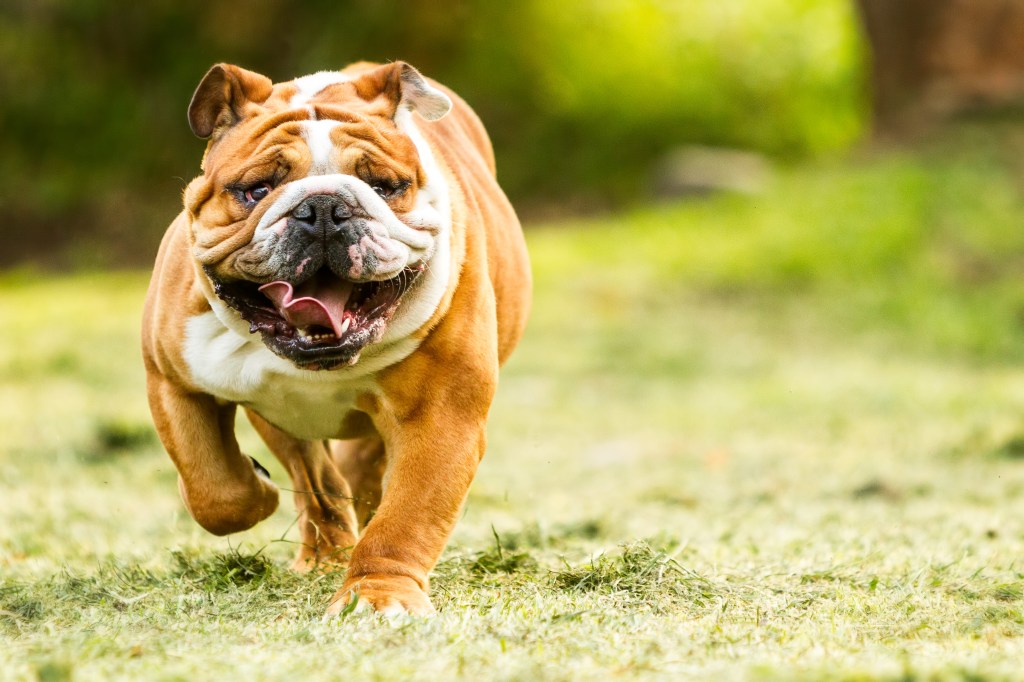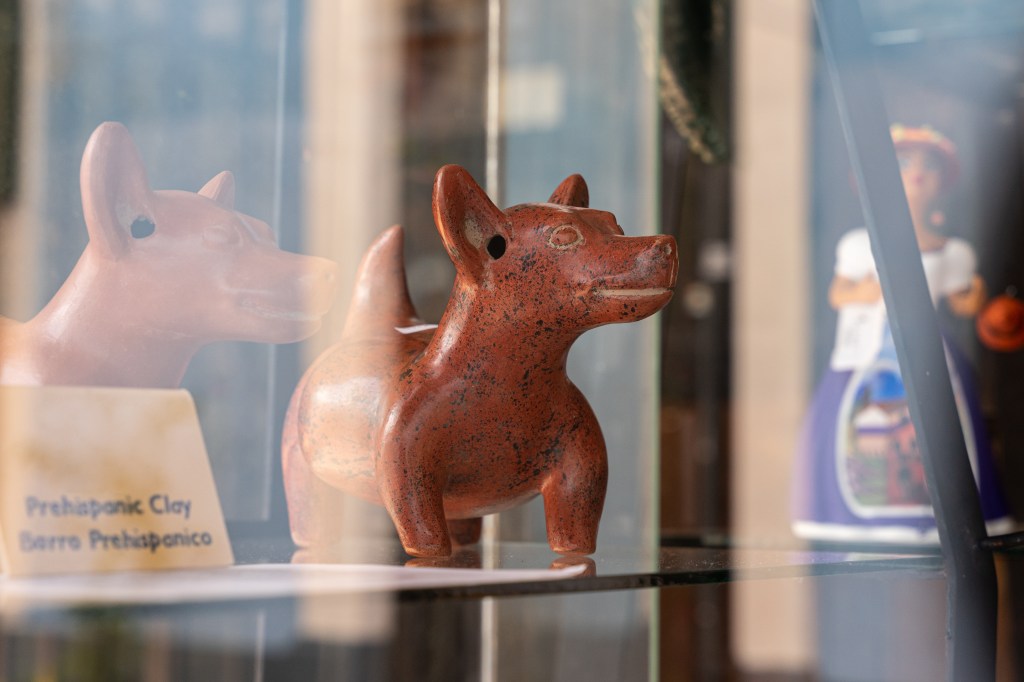Why Do People Go Gaga for Puppies? The Reason Is Centuries Old
The science of cute.

Babies require a lot of attention, as any parents will tell you — and while the love is always there, the caretaking is not all fun and games. That’s why we have built-in biological mechanisms for overcoming the occasional irritation and impatience we experience with kids, even if the child isn’t ours.
The Japanese language offers us the term “kawaii” that touches on this feeling of something being unbearably cute. We are drawn in, and our hearts melt. This happens even for those of us who aren’t parents. Our attraction to cuteness goes way beyond ourselves, our individual habits, and our personal likes. Rather, it taps into a more universal human emotion and our species’ way of being in the world — a pattern called “neoteny,” or the retention of childlike features into adulthood. Culturally speaking, we are a species consistently drawn to the juvenile features found in babies. This is a trait engineered by evolution to guarantee we will always protect and care for our young.
Interestingly, that same principle applies to dogs. No matter how much barking, carpet peeing, digging, or scratching they do, there’s something irresistible about pups.
Animals Have the “It” Factor
The deep attraction that connects us to human infants extends to other species, as well; puppies being a prime example. Across the animal kingdom, newborns wow adults with the features of neoteny. Caretakers are seduced into caring for their offspring as a result. At times, even strangers from different species participate in such caretaking. Famously, a bottlenose dolphin mom was found nurturing a whale calf. While we cannot fully grasp the emotions of other animals, we can be confident that the feelings are there. That’s because a host of research has shown that “feelings” do not belong to humans alone.
A Special Relationship
When it comes to the human-dog relationship, the two species’ mutual affection is unique. This has to do with our shared history and evolutionary past. Dogs and humans domesticated each other during the earliest days of human evolution. We changed dogs, and they changed us, too.
This shared existence began taking shape around 30,000 years ago during the Paleolithic period, when humans were hunter-gatherers living in roaming bands. In this period — which preceded agriculture, cities, and monetary exchange — humans were intimately familiar with the natural world. As meat eaters and predators, humans have been longtime observers of other species. Ancient wolves coexisted with these early humans, and in several areas across Europe and Eurasia, wolves and humans had close encounters with each other.
The Earliest Companions
Early humans began to keep and occasionally feed wolf cubs in their villages and base camps. While all baby animals are cute in their own way, there is something especially enticing to humans about the furry faces of puppies. Today, we humans are even more drawn in. This is largely because of how dogs as a species have been shaped over thousands of years. While a wolf cub is cute and sweet, you do not want to cuddle with a grown wolf. Dogs, however, are a different story.
They have, owing to captivity and human preference for childlike features, become more “neotenic” over time. In comparison with their wolf ancestors, dogs have shorter skulls and snouts, along with larger and more rounded eyes. Some breeds, such as flat-faced bulldogs, have been bred to heighten these features even further. We also find a version of neoteny in popular culture. The Walt Disney character Mickey Mouse was transformed by cartoonists from his early, much more ratlike version, into a creature with big rounded ears and huge babyish eyes.

Changes in Humans
Some scientists suggest that over the past several million years, humans have themselves — as a species — gone through a process of “self-domestication.” As such, we now carry a number of juvenile or neotenic features into adulthood, and we retain many physical features throughout our life that other primates exhibit only as babies. Additionally, we continue to play as children throughout our lives. Consider, for example, the sports and video games that adults enjoy.
While the earliest stages of dog domestication centered around work, such as pulling sleds, guarding, and hunting, companionship became important along the way. Thousands of years ago, for instance, the Aztec and Maya of Central America and those in the Chinese empire bequeathed to dogs social roles from friendship to signs of status, including burial with novelty items and depictions in art. This is where some of the early miniature breeds came into existence. These breeds were not helpful for towing a cart or hunting bison; instead, they were expressions of wealth, power, and love.

The Force of Human Culture
The Chihuahua’s ancestral forbear, the tlalchichi, was bred by the Aztec and Maya empires and inspired the creation of several statues. Such canines remained small throughout their life span and always looked childlike. In essence, the earlier and larger dog “prototype” became shrunken through breeding. A new, more neotenous version was created through human cultural practices.

It’s worth keeping in mind that such breeding practices aren’t really for the benefit of dogs themselves. Many contemporary breeds are appealing to the human eye because we are so drawn in by neotenous pattern as a species. But, in many cases, these dog breeds develop persistent health problems. Terriers and bulldogs, for example, almost always require a caesarean section to give birth to their puppies, while other neotenous breeds have trouble breathing.
Repeat With Caution
All around, neoteny is a fascinating pattern in nature and has been observed in many species besides dogs and humans, including insects. On the cultural side of things, we humans have become quite drawn to such patterns, particularly as expressed in dogs and cartoons — not to mention countless internet memes. It is truly wonderful to feel so deeply connected to other species and to embrace the depth of the special bond that we enjoy with our canines. But we still need to exercise caution and care.
When attraction is fueled by human economic practices, the pull of neotenic patterns can also lead us into some ethically questionable actions, such as the production of breeds with longstanding health problems. Being a neotenic, or “childlike” species ourselves, we humans might be particularly culpable for these kinds of questionable practices. But because of our culture and social organization, we are also capable of reexamining the ethics of our current practices for the better.
A version of this article appeared in our partner magazine Inside Your Dog’s Mind.












